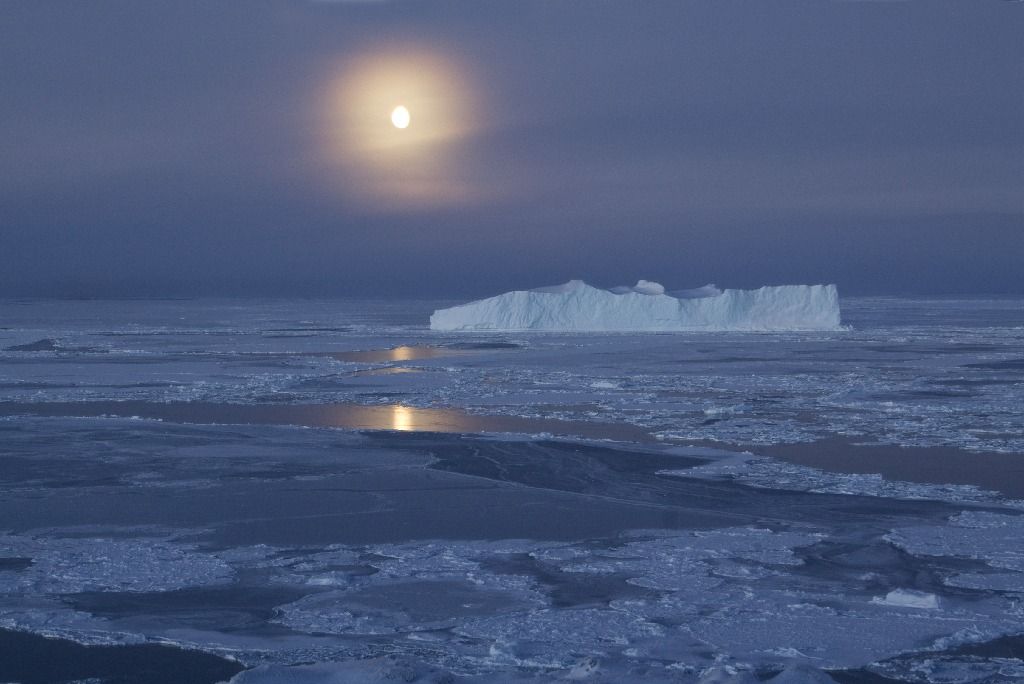
Wildlife Across the Globe Rely on Pristine Antarctic Waters: Protect Them (Op-Ed)

Bradnee Chambers, executive secretary of the United Nations Environment Programme Convention on the Conservation of Migratory Species of Wild Animals, contributed this article to LiveScience's Expert Voices: Op-Ed & Insights.
At the end of last year, representatives from the U.S., the European Union and more than 30 other nations met in the Tasmanian city of Hobart, Australia. It was the thirty-second meeting of a commission tasked with protecting Antarctica's life from risks to the continent's nearly pristine ecosystems.
The nations, members of the Commission for the Conservation of Antarctic Marine Living Resources (CCAMLR), were following through on obligations from the international treaty that established the commission in 1982 to conserve the marine animals of Antarctica, and in particular, its krill resources.
Krill is especially abundant in the global food web, and as a result, scientists estimate that three-quarters of all marine life is maintained by the nutrient-rich waters from Antarctica's Southern Ocean.
At the Hobart conference, the commission's member states discussed establishing two international marine protected areas in Antarctica, which would have been the world's largest. Each would have exceeded 1 million square kilometres (620,000 square miles). The Ross Sea and Eastern Antarctic zones would have doubled the area of fully protected ocean covered as marine protected areas to two per cent of the world's oceans, with a surface five times the size of France.
However, the negotiations failed, once again, because member states could not reach consensus. However, some delegates were confident that enough progress was made to achieve a breakthrough at the next meeting at the end of 2014.
Why are Antarctic marine protected areas so important? The Pew Environment Group states that the region is vital to sustaining the majority of the planet's marine life. Marine protected areas have proved to be effective in revitalizingthe health of aquatic life not only in the reserves themselves but also in adjacent waters, such as in the Leigh Marine Reserve in New Zealand where productive fish stocks inside the reserve have migrated into the surrounding waters and increased densities. In addition, protecting Antarctic waters could help mitigate the impact of climate change on the marine environment by building resilience for ecosystems.
Sign up for the Live Science daily newsletter now
Get the world’s most fascinating discoveries delivered straight to your inbox.

Scientists estimate that over 10,000 known species — including whales, seals, albatrosses, penguins and rare species of fish —live in the Ross Sea and Eastern Antarctic. Whales in particular depend on healthy krill populations for their survival. The Arctic tern, a bird species also occurring in these waters, travels 12,000 miles on its incredible journey between the northern and southern poles —imagine if it traveled and found its southern food sources were depleted. The outcome of CCAMLR negotiations is of particular importance to the Convention on Migratory Species given how vital the Antarctic is for a wide range of species.
Non-governmental organizations rated the outcome of the negotiations in Hobart as disappointing, but the door is not closed for attempts at the next CCAMLR meeting at the end of this year to establish protected areas in these last pristine oceanicareas. We at UNEP encourage the international community to continue working towards effective protection mechanisms for this unique and vital marine environment.
This implies continuing the negotiations within CCAMLR, but it also means making use of the conservation mechanisms already at our disposal.
The Convention on Migratory Species, which can look back on major achievements to conserve whales and albatrosses that migrate to the Antarctic region, is one of these mechanisms.
Parties to the convention can make a major contribution to improving the conservation status of Antarctic marine species by fully complying with their obligations to protect migratory species listed on CMS Appendix I and their habitats. Fortunately, we are not condemned to inactivity. So let our countriesjoin efforts and act — now!
The author's most recent Op-Ed was "Fenced In, Animal Migrations Cannot Survive." The views expressed are those of the author and do not necessarily reflect the views of the publisher. This version of the article was originally published on LiveScience.












